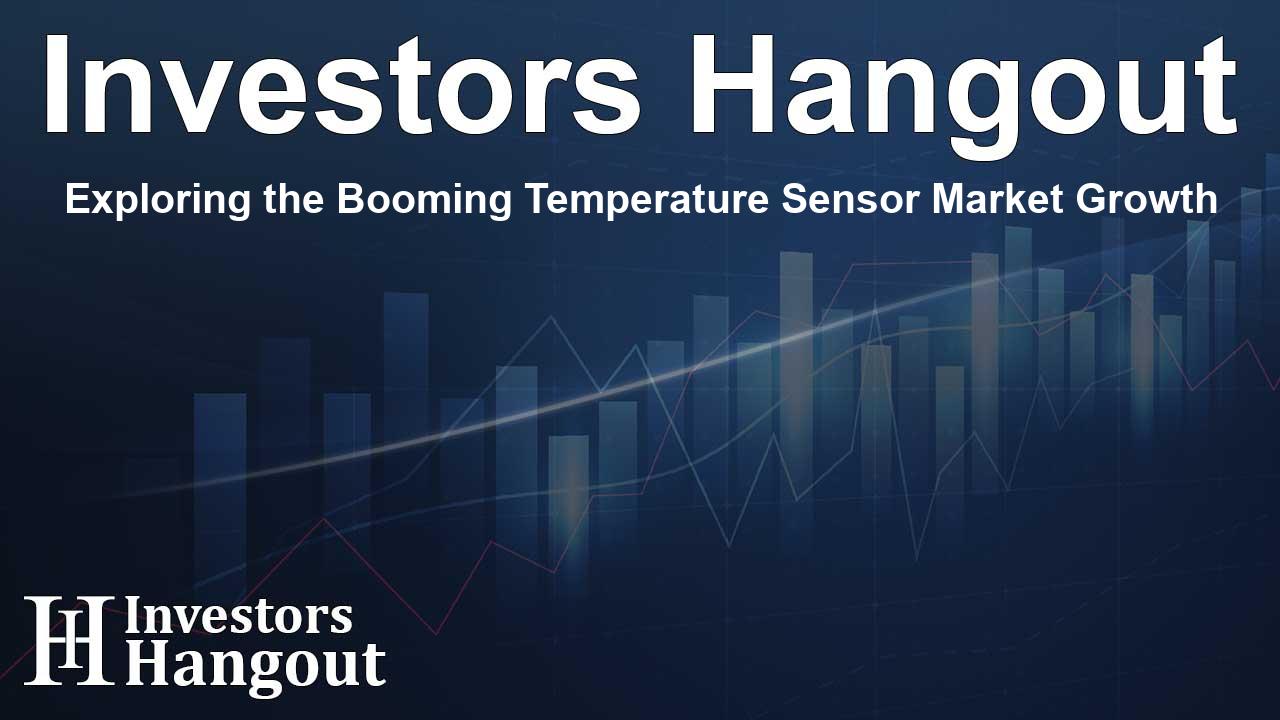Exploring the Booming Temperature Sensor Market Growth

Temperature Sensor Market Overview
The temperature sensor market is on a remarkable upward trajectory, projected to reach $9.66 billion by 2030. This growth is fueled by the increasing demand for innovative temperature-sensing technologies across various sectors, including consumer electronics, automotive, and industrial applications.
Reasons Behind Market Growth
The significant expansion of the temperature sensor market can be attributed to several factors. Key among these is the growing miniaturization of sensors that allows them to be integrated seamlessly into a multitude of devices. Furthermore, the evolution of Industry 4.0 is driving advancements that enhance the efficiency and productivity of industrial processes.
Technological Advancements and Industry 4.0
Industry 4.0 has revolutionized how industries utilize temperature sensors by leveraging real-time data collection. This leads to more effective process optimization, predictive maintenance, and quality control while minimizing operational disruptions. Countries such as China, the USA, and Germany are heavily investing in these technologies to enhance their market competitiveness.
Applications Across Various Industries
Temperature sensors play a critical role across diverse sectors. They are pivotal in semiconductor manufacturing, where precise temperature control is essential for efficient production. In the healthcare domain, temperature sensors are crucial for monitoring equipment and patient conditions, ensuring safety and compliance.
Consumer Electronics and Temperature Management
The consumer electronics market has exhibited a growing inclination toward devices that incorporate temperature sensors. As users increasingly demand reliable performance without overheating, manufacturers prioritize integrating these sensors into smartphones, laptops, and other portable devices to maintain optimal temperatures and enhance longevity.
Impact of Data Center Growth
With the ever-increasing demand for data storage and processing, the rise of data centers necessitates effective temperature management solutions. Data centers utilize complex temperature monitoring systems to prevent overheating and protect infrastructure. The ASHRAE report indicates that each rack within a data center typically utilizes multiple temperature sensors to maintain optimal air flow and prevent equipment failure.
Market Segmentation by Type and End Users
The temperature sensor market can be segmented in several ways, including by type—thermocouples, thermistors, and resistance temperature detectors—where thermocouples tend to dominate. The end-user segmentation reveals a significant demand from the semiconductor sector, which is pivotal for market growth.
Competitive Landscape and Key Players
The market landscape includes notable players such as Texas Instruments Inc, Siemens AG, and TE Connectivity Ltd. These companies continually engage in strategic initiatives such as product launches and collaborations to fortify their market positions. Their diverse range of temperature sensor products caters to various industries, enhancing their competitive edge.
Recent Innovations
Recent advancements in sensor technology, such as Microchip Technology's new automotive remote temperature sensors and TDK Corporation's innovative NTC thermistors, highlight the ongoing evolution within the market. These innovations emphasize the industry’s commitment to achieving higher accuracy and efficiency in temperature monitoring.
Conclusion
In summary, the temperature sensor market is set for remarkable growth owing to the rising demand for precise temperature monitoring across various sectors. With technological advancements and a clear focus on quality, companies can strategically position themselves to capitalize on the burgeoning opportunities within this dynamic market. By understanding industry trends and consumer needs, they can enhance their offerings and ensure sustained growth moving forward.
Frequently Asked Questions
What is the expected growth of the temperature sensor market?
The temperature sensor market is projected to reach $9.66 billion by 2030.
What are the main applications of temperature sensors?
Temperature sensors are widely used in the semiconductor industry, healthcare, consumer electronics, and data center management.
Who are the key players in the temperature sensor market?
Some key players include Texas Instruments Inc, Siemens AG, and TE Connectivity Ltd.
How does Industry 4.0 influence temperature sensor demand?
Industry 4.0 enhances efficiency through real-time data usage, driving substantial demand for advanced temperature sensing technologies.
What types of temperature sensors are most commonly used?
Thermocouples, thermistors, and resistance temperature detectors are the main types of temperature sensors utilized in various applications.
About The Author
Contact Evelyn Baker privately here. Or send an email with ATTN: Evelyn Baker as the subject to contact@investorshangout.com.
About Investors Hangout
Investors Hangout is a leading online stock forum for financial discussion and learning, offering a wide range of free tools and resources. It draws in traders of all levels, who exchange market knowledge, investigate trading tactics, and keep an eye on industry developments in real time. Featuring financial articles, stock message boards, quotes, charts, company profiles, and live news updates. Through cooperative learning and a wealth of informational resources, it helps users from novices creating their first portfolios to experts honing their techniques. Join Investors Hangout today: https://investorshangout.com/
The content of this article is based on factual, publicly available information and does not represent legal, financial, or investment advice. Investors Hangout does not offer financial advice, and the author is not a licensed financial advisor. Consult a qualified advisor before making any financial or investment decisions based on this article. This article should not be considered advice to purchase, sell, or hold any securities or other investments. If any of the material provided here is inaccurate, please contact us for corrections.
